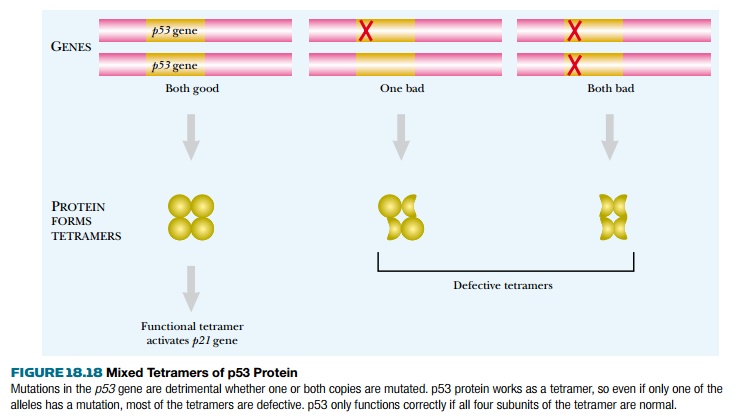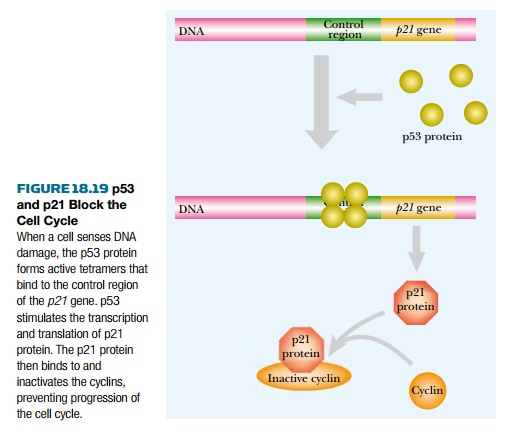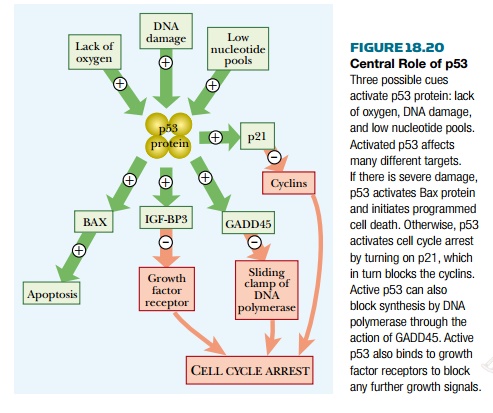Chapter: Biotechnology Applying the Genetic Revolution: Molecular Biology of Cancer
The p16, p21, and p53 Anti oncogenes
THE
p16, p21, AND p53 ANTI-ONCOGENES
Best
known of the human anti-oncogenes is the infamous p53 gene , found on
the short arm of chromosome 17. The p53 protein (also known as TP53) is a DNA
binding protein that, together with proteins p16 and p21, acts as an emergency
braking system for the cell cycle. The p53 gene is involved in a very
large number of diverse cancers because its behavior differs from that of a
standard anti-oncogene. Mutant alleles of typical antioncogenes are recessive
and a single mutation does not allow cell division. In contrast, a single
defective p53 allele does show such effects, even in the presence of a second,
normal copy of the gene. Thus p53 mutations are dominant negatives. Well over
half of all human cancers are defective in p53.

The reason for this aberrant behavior is the formation of mixed tetramers. The protein encoded by the p53 gene assembles into groups of four ( Fig. 18.18 ). When a cell has one good copy of the p53 gene and one bad copy, it will produce a mixture of functional and defective p53 protein subunits. These will assemble into mixed tetramers, and even if a tetramer contains some good subunits, a single defective subunit will cripple the whole assembly. The likelihood of assembling a wholly good tetramer from such a 50:50 mixture of functional and defective subunits is ½ × ½ × ½ × ½ = ¹⁄16. Thus, only one-sixteenth of the p53 protein assemblies will function correctly even though half of the individual protein subunits are normal.
If
a cell’s DNA is damaged in any way, the normal p53 protein activates the gene
for p21. The p21 protein then blocks the action of all of the cyclins and
freezes the cell wherever it is in the cell cycle until the damage can be
repaired ( Fig. 18.19 ). The p16 protein acts similarly, but just blocks cyclin
E. It stops division at the critical point just before the cell enters the
Sphase in which the DNA is replicated.

The
p53 protein is not necessary for normal cell division. Mice with both copies of
the p53 gene knockeout grow normally to start with. However, they all
die of cancer after 3 or 4 months. The role of p53 is to shut down cell
division in DNA emergencies, such as ultraviolet radiation damage. The p53
pathway also responds to a shortage of nucleotides or a lack of oxygen. In
severe cases, p53 may initiate programmed cell death, via Bax protein rather
than merely arresting cell division ( Fig. 18.20 ). The p53 protein is inactive
when first synthesized and cannot bind to its recognition sequence in the
upstream region of those genes it controls. It maybe activated to form the tetramer
by binding to single-stranded DNA or by phosphorylation.

Related Topics